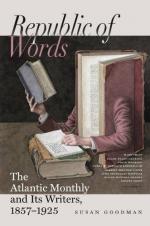DAPHNAIDES:
Or the English laurel, from Chaucer to Tennyson.
They in thir time did many a noble dede,
And for their worthines full oft have
bore
The crown of laurer leaves on the hede,
As ye may in your olde bookes rede:
And how that he that was a conquerour
Had by laurer alway his most honour.
Dan
Chaucer: The Flowre and the Leaf.
It is to be lamented that antiquarian zeal is so often diverted from subjects of real to those of merely fanciful interest. The mercurial young gentlemen who addict themselves to that exciting department of letters are open to censure as being too fitful, too prone to flit, bee-like, from flower to flower, now lighting momentarily upon an indecipherable tombstone, now perching upon a rusty morion, here dipping into crumbling palimpsests, there turning up a tattered reputation from heaps of musty biography, or discovering that the brightest names have had sad blots and blemishes scoured off by the attrition of Time’s ceaseless current. We can expect little from investigators so volatile and capricious; else should we expect the topic we approach in this paper to have been long ago flooded with light as of Maedler’s sun, its dust dissipated, and sundry curves and angles which still baffle scrutiny and provoke curiosity exposed even to Gallio-llke wayfarers. It is, in fact, a neglected topic. Its derivatives are obscure, its facts doubtful. Questions spring from it, sucker-like, numberless, which none may answer. Why, for instance, in apportioning his gifts among his posterity, did Phoebus assign the laurel to his step-progeny, the sons of song, and pour the rest of the vegetable world into the pharmacopoeia of the favored AEsculapius? Why was even this wretched legacy divided in aftertimes with the children of Mars? Was its efficacy as a non-conductor of lightning as reliable as was held by Tiberius, of guileless memory, Emperor of Rome? Were its leaves really found green as ever in the tomb of St. Humbert, a century and a half after the interment of that holy confessor? In what reign was the first bay-leaf, rewarding the first poet of English song, authoritatively conferred? These and other like questions are of so material concern to the matter we have in hand, that we may fairly stand amazed that they have thus far escaped the exploration of archaeologists. It is not for us to busy ourselves with other men’s affairs. Time and patience shall develope profounder mysteries than these. Let us only succeed in delineating in brief monograph the outlines of a natural history of the British Laurel,—Laurea nobilis, sempervirens, florida,—and in posting here and there, as we go, a few landmarks that shall facilitate the surveys of investigators yet unborn, and this our modest enterprise shall be happily fulfilled.




